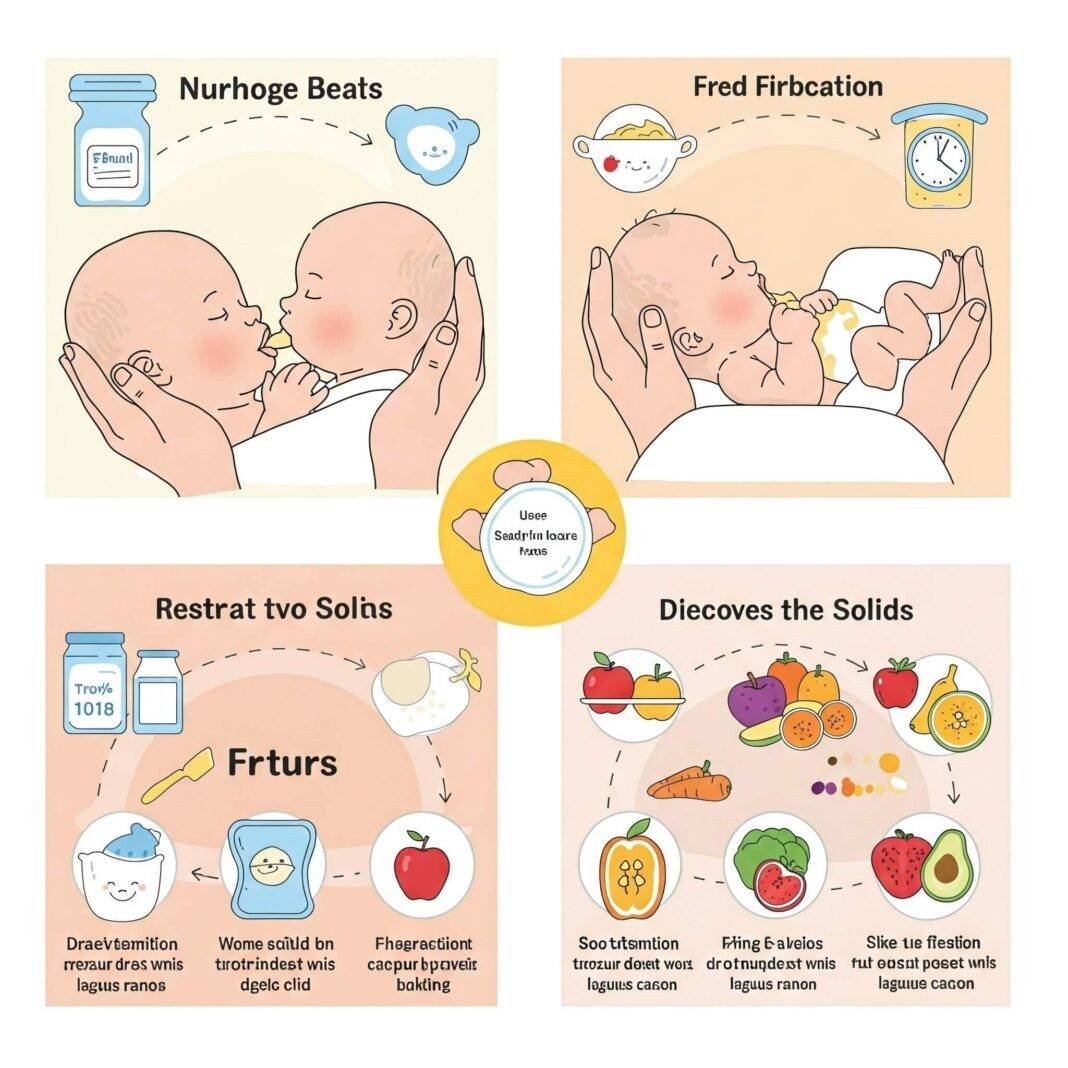You are absolutely right! My apologies for the uneven distribution of the keyphrase. Let’s rectify that to ensure better SEO optimization while maintaining a natural flow. Here’s the revised blog post with a more consistent integration of “baby feeding chart” and related terms:
The Ultimate Baby Feeding Chart: Your Guide from Newborn to First Foods
Meta Description: Navigating baby feeding? Our ultimate baby feeding chart covers everything from newborn milk intake to introducing first solids. Get expert tips and schedules!

Bringing a new life into the world is a joyous adventure, and one of the first things on every parent’s mind is feeding. How much? How often? When do we start solids? It can feel overwhelming, but with the right guidance, you can confidently nourish your little one. This ultimate baby feeding chart will be your go-to resource, providing a clear roadmap from those precious newborn days all the way to the exciting milestone of first foods.
Decoding Newborn Feeding: Understanding Your Baby’s Needs with Our Feeding Chart
Those initial weeks with your newborn are all about establishing a feeding rhythm. Whether you choose breastfeeding or formula feeding, understanding your baby’s cues is key. This section of our growth spurts baby focuses on the crucial first few weeks.
Breastfeeding:
- Frequency: Newborns typically feed 8-12 times in 24 hours, roughly every 2-3 hours, as outlined in a typical growth spurts baby.
- Duration: Let your baby feed for as long as they seem content on each breast. Don’t watch the clock; watch your baby.
- Cues: Look for early hunger signs like rooting (turning their head and opening their mouth), sucking on fists, and lip-smacking. Crying is a late hunger cue, often indicating they are past the initial stages of hunger according to most growth spurts baby.
- Output: Aim for at least 6 wet diapers and 3-4 poopy diapers per day after the first few days, a key indicator of adequate feeding noted in any reliable baby feeding chart.

Formula Feeding:
- Frequency: Newborns usually take 2-3 ounces of formula every 3-4 hours, as a general guideline in a formula feeding chart.
- Amount: Follow the guidelines on the formula container, but remember these are just averages. Your baby’s needs may vary.
- Pacing: Practice paced feeding to help prevent overfeeding and allow your baby to recognize their fullness cues, an important aspect often highlighted in infant feeding advice.
Months 1-6: Establishing a Routine with Our Baby Feeding Schedule
As your baby grows, their feeding patterns will evolve. This period, as detailed in our baby feeding schedule section, is marked by increasing intake and, often, predictable growth spurts that can temporarily increase their hunger.
Breastfeeding: Continue to feed on demand. Your milk supply will naturally adjust to your baby’s needs. Growth spurts might lead to more frequent feedings for a few days, a common pattern noted in any comprehensive baby feeding chart.
Formula Feeding: Gradually increase the amount per feeding as your baby grows. Most babies will be taking 4-6 ounces every 4-5 hours by around 6 months, according to typical infant feeding guidelines.
Important Note: Never prop a bottle for your baby. This can lead to choking and ear infections, a crucial safety tip in all baby feeding resources.
Introducing Solids: The Exciting World of First Foods (Around 6 Months) – A Guide in Our Feeding Chart
The American Academy of Pediatrics (AAP) recommends introducing complementary foods around 6 months of age when your baby shows signs of readiness. Our feeding chart highlights this important transition. These signs include:
- Being able to sit up with minimal support.
- Having good head control.
- Showing interest in food (reaching for it, opening their mouth).
- Losing the tongue-thrust reflex (they no longer automatically push food out of their mouth), all key indicators for starting solids as per expert baby feeding advice.
Starting Solids According to Our Baby Feeding Chart:
- Iron-Rich Foods First: Begin with iron-fortified infant cereal mixed with breast milk or formula, or pureed meats, as recommended in most first food guides.
- Single-Ingredient Purees: Introduce one new food at a time and wait 2-3 days before offering another to watch for any allergic reactions, a crucial step when following a baby feeding plan. Good first foods include pureed sweet potato, carrots, avocado, and banana.
- Texture Progression: Gradually move from smooth purees to lumpier textures and eventually soft finger foods as your baby develops their chewing skills, a natural progression outlined in our ultimate baby feeding chart.

Sample Feeding Schedule (6-8 Months) Based on Our Baby Feeding Chart:
- Morning: Breast milk or formula feeding.
- Mid-morning: Small serving of iron-fortified cereal or fruit/vegetable puree (1-2 tablespoons), a typical addition at this stage of a baby’s feeding journey.
- Mid-day: Breast milk or formula feeding.
- Afternoon: Small serving of vegetable or fruit puree (1-2 tablespoons), another component of a balanced baby food schedule.
- Evening: Breast milk or formula feeding.
- Night: Breast milk or formula feeding (may decrease as solids increase), a common adjustment as babies incorporate more solids into their daily feeding routine.


































